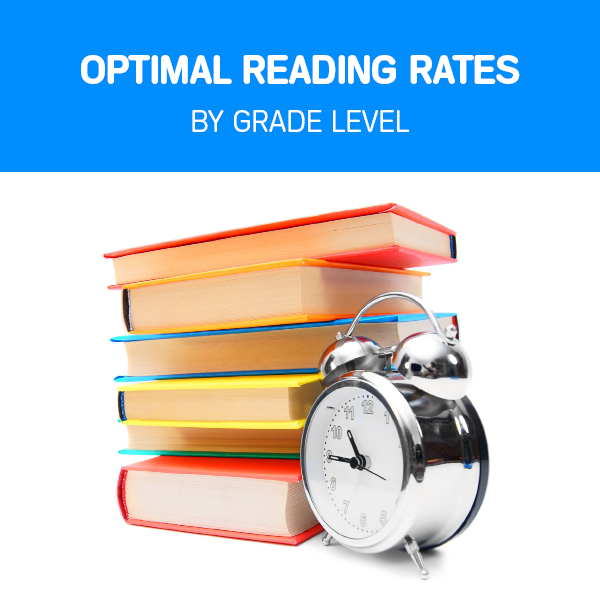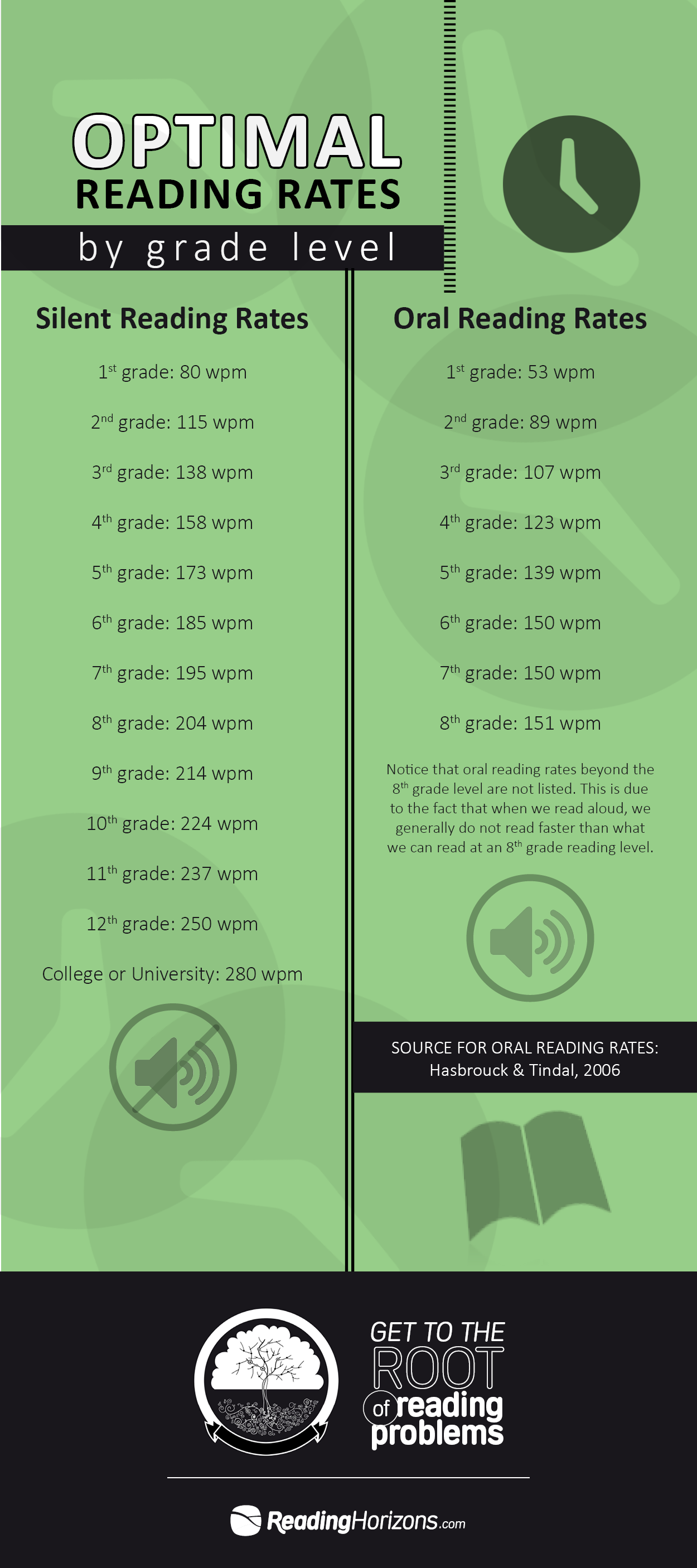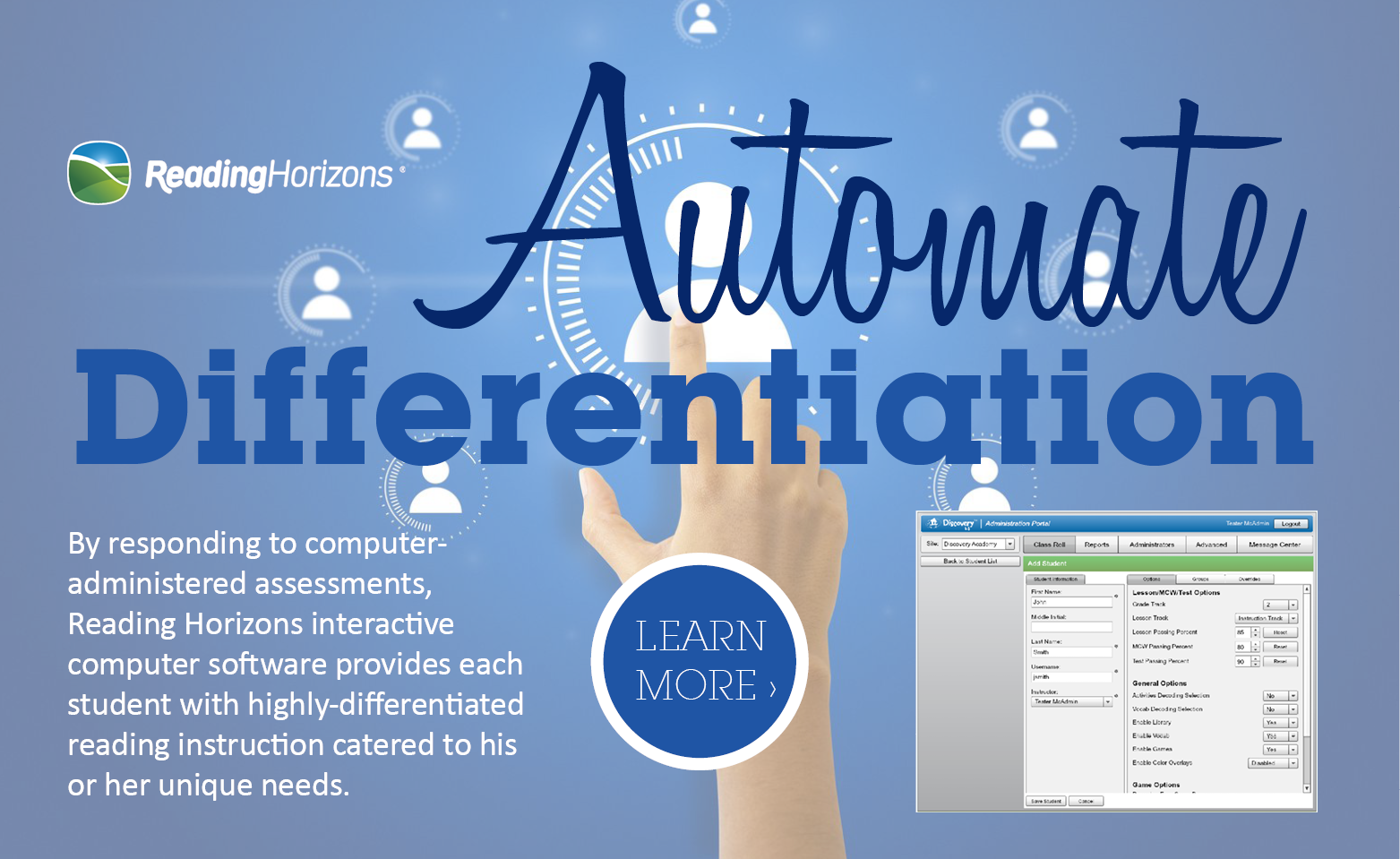Optimal Silent & Oral Reading Rates By Grade Level
 Dr. Neil J. Anderson, professor of Linguistics and English Language at Brigham Young University, recently presented at the Reading Horizons distributor seminar in Salt Lake City, Utah. He shared some interesting information about how English Language Learners (ELLs) benefit from explicit phonics instruction. Two of the reasons he cited include the following:
Dr. Neil J. Anderson, professor of Linguistics and English Language at Brigham Young University, recently presented at the Reading Horizons distributor seminar in Salt Lake City, Utah. He shared some interesting information about how English Language Learners (ELLs) benefit from explicit phonics instruction. Two of the reasons he cited include the following:
- reading fluency increases as students learn to decode words; and
- oral reading improves when students can decode words correctly.
Learn more about what decoding is ›
Reading fluency, as defined by Dr. Anderson, is "reading at an appropriate rate with adequate comprehension" (Anderson, 2008, p. 3). This definition of reading fluency is important as teachers consider what an "appropriate reading rate" is for their students. Remember that reading at a quick pace (an "appropriate rate") without comprehending what is being read is not fluent reading. Additionally, reading super slowly and understanding everything being read ("adequate comprehension") likewise is not fluent reading. The balance between the two—reading rate and comprehension—is important to fluency
So what constitutes an "appropriate rate"? During the presentation, Anderson referenced national averages for optimal silent and oral reading rates by grade level (Reference for oral reading rates: Hasbrouck & Tindal, 2006). Since I've talked to several people who were interested in having access to this information, I thought I would include the information in this blog post below:
Silent Reading Rates & Oral Reading Rates | Words Per Minute [WPM]

Notice that oral reading rates beyond the
These silent and oral reading rates can be used as a guideline when discerning appropriate reading rates for students. Adjustments to these reading rates could be made to accommodate English Language Learners and students with reading difficulties
Related Articles
What’s the Best Way to Pace Students’ Reading Instruction?
How to Get Started When Teaching Struggling Readers
Crucial Steps for Effectively Teaching Reading to Struggling Readers
4-Step Process for Helping Students Transfer Decoding Skills to Written Text
A Simple Strategy for Teaching Struggling Readers [Raised Passing Rates from 50% to 96%]
Interested in learning more about Early Literacy or Lexile and Book Levels? Explore our FREE educational resources to learn how you can help the young readers in your life!
References
Anderson, N. J. (2008). Practical English language teaching: Reading. New York: McGraw-Hill.
Hasbrouck, J., & Tindal, G. A. (2006). Oral reading fluency norms: A valuable assessment tool for teaching teachers. The Reading Teacher, 59, 636-644.
14 Comments

courses gold coast said
So interesting information about how English Language Learners benefit from systematic phonics instruction.

Andrea W. Kotula, Ed.D. said
Hello, I'm not sure what Dr. Anderson actually presented, but Hasbrouck and Tindal's 2006 study only provided norms for oral reading, not silent reading--as noted in the title of the article you cite. Moreover, you've reproduced the spring norms at the 50th percentile, but the authors provide fall, winter and spring norms at the 10th, 25th, 50th, 75th, and 90th percentiles. I'd love to know who developed the silent reading norms on your blog post. The only ones I've been able to find are decades old. Thanks.

heidi said
Dr. Kotula, Thank you for your comment. The spring norms were referenced (as opposed to fall and winter) because Dr. Anderson wanted to focus on what the reader at each specific grade level would be able to do by the end of the school year. In addition, he chose to reference the 50th percentile because he wanted to get readers right in the middle. I have checked with Dr. Anderson on the reference for silent reading norms and will pass that information along when I receive it. Thank you again for your inquiries and insight.

heidi said
Dr. Kotula, One more thought I failed to mention: To understand more of the context for what Dr. Anderson presented, you're welcome to visit this blog post: http://www.esltrail.com/2010/07/five-reasons-why-english-language.html

IGCSE Schools in Banglore said
I just wanted to inform you about how much my partner and i appreciate all you’ve discussed to help improve the lives of folks in this subject material. Through the articles, we have gone through just a newbie to a specialist in the area. It is truly a gratitude to your work. Thanks
http://www.greenwoodhigh.edu.in/news_view.php?newsid=44

Kem said
I know someone asked this already, but I do not see a response posted... Do you have a citation/author for the silent reading rates? Thanks!

grady thomas said
What does the term "pulpit reading rate" mean? I have asked several times and places

Alayna said
I'm in 4th grade and my oral wpm is 220.

S. Read said
Hello, I would also love to get the reference for the silent reading rates. Thank you!

Ilyanna said
I'm in 8th grade with a 341 wpm reading level. I'm in all adv/gifted academic classes and according to the information above, I have most likely been reading at a higher wpm rate than most college-level students for at least the past three years. 9th grade, at least six. would you happen to have information with the rates of gifted people?

tina said
hi, i'm a teacher and a mother.being a mother i was the first teacher to my son.i love to teach reading.i taught my son to read and he started reading at 3 yrs.old. now he is in the third grade at 8 yrs.old and on top of his class.i believe that the earlier the child reads the more likely he will excel in school.

Jan Hasbrouck said
This blog seems to indicate that Dr. Anderson discussed both silent and oral reading rates in his talk and referenced my work (Hasbrouck & Tindal, 2006). On August 21, 2010
Dr. Andrea W. Kotula correctly noted that our norms are ONLY for oral reading rates (wcpm), not for silent reading. The chart has confused some people and they have then used our work as a citation of silent reading rates. I would appreciate a correction of this as soon as possible. Thank you.

marketing said
@Jan Hasbrouck, we apologize for any confusion the chart has caused. We have updated the chart to indicate your research only applies to the oral reading rates.

McKenzie said
On your chart, it said that college or university students read 280 wpm. I read 310 wpm we do reading plus.
